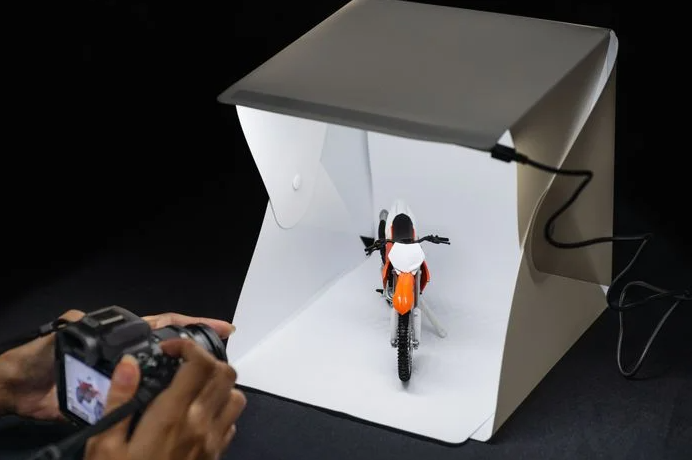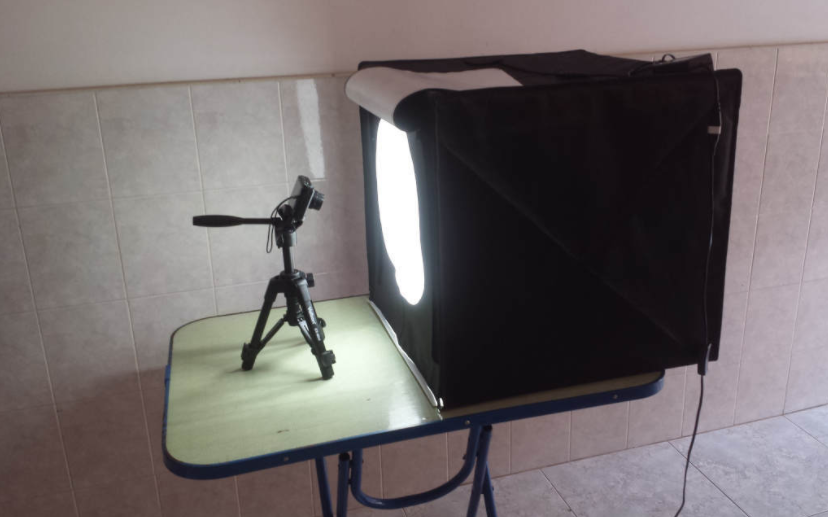What Is a Lightbox in Photography? Have you ever wondered how photographers capture those stunning close-up shots with flawless lighting and impeccable detail? The secret lies within a small but mighty device called a lightbox. Whether you’re shooting jewellery, food, or small objects for e-commerce purposes, mastering the art of using a lightbox can take your photography skills to new heights. In this comprehensive guide on what a lightbox is in photography, we’ll uncover its inner workings and reveal tips and tricks for achieving professional-looking results right from the comfort of your home studio.

What Is a Lightbox?
A lightbox is a tool photographers use to light a subject for a photograph uniformly and gently. Its translucent surface diffuses the light emanating from a light source inside the box and is often constructed of cardboard or metal. This makes the light on the subject very even and gentle, which is excellent for photographing portraits or product photos.
What is a lightbox in photography?
A lightbox is a device used by photographers to evenly and softly light a subject for taking a picture. It is usually made out of cardboard or metal and has a translucent surface that diffuses the light coming from a light source inside the box. This creates a very even and soft light on the subject, which is great for taking portraits or product shots.
What is the definition of what a lightbox is?
A photo lightbox is used to light an object or scene, usually to take a picture. They come in various forms and dimensions but always aim to give uniform lighting. This is crucial when photographing tiny items because an uneven light source might make them appear distorted or unclear.
You may find inexpensive photo lightboxes online or in most camera shops. They typically consist of thin metal or plastic molded into them, and either LED or fluorescent illumination is included. Additionally, some lightboxes have a transparent white backdrop that aids in distributing light equally across the subject being taken.
Photographers frequently use lightboxes to capture their product pictures since they are an easy and inexpensive technique to generate excellent, even light. For about $30, you can purchase a basic lightbox or build your own out of cardboard and white fabric. Ensure your lightbox is big enough for the subject to fit comfortably inside.
How does the photo lightbox work?
Fluorescent or LED light bulbs illuminate an object put inside a picture lightbox. Photographers frequently use this box to capture images of tiny items like jewelry, coins, and stamps.
The box’s light shines evenly and consistently on the subject to prevent shadows and reflections that can affect the photo. Light reflected off the box’s inside walls illuminates the object from all sides, giving it a highly even image for photography. Any shadows cast by the item itself are eliminated by side and bottom lights. As a result, it makes it possible for textures on small objects to be illuminated more precisely.

A lightbox is a tool photographers use to light a subject for a photograph uniformly and gently. Its translucent surface diffuses the light emanating from a light source inside the box and is often constructed of cardboard or metal. This makes the light on the subject very even and gentle, which is excellent for photographing portraits or product photos. Photographers frequently use lightboxes to capture their product pictures since they are an easy and inexpensive technique to generate wonderful, even light. For about $30, you can purchase a basic lightbox or build your own out of cardboard and white fabric. Ensure your lightbox is big enough for the subject to fit comfortably inside. A lightbox is a fantastic item to add to your toolbox if you’re trying to capture better product photographs. Lightboxes can also be used for jewelry photography.
Give it a try!
Conclusion
In conclusion, a lightbox is essential for photographers looking to capture stunning images with controlled lighting. Whether used for product photography, macro photography, or any other studio setting, a lightbox provides a simple and effective way to create professional-looking photos. Diffusing and evenly distributing light eliminates harsh shadows and reflections, resulting in clean and well-lit images. Furthermore, the versatility of a lightbox allows photographers to experiment with different lighting setups and backgrounds to achieve various effects. So, if you’re serious about improving your photography skills, consider investing in a lightbox – your images will thank you!
Note: Interested in How to Make a White Box for Photography?
Frequently Asked Questions
Q1: What is a lightbox in photography?
A1: In photography, a lightbox is a device or equipment that provides even and diffused illumination to view, edit, or trace photographic transparencies, slides, or other translucent media.
Q2: What are the primary uses of a lightbox in photography?
A2: Lightboxes are commonly used for tasks like examining film negatives or slides, retouching photographs, tracing artwork or designs, and inspecting translucent materials for quality control.
Q3: What are the critical components of a typical photographic lightbox?
A3: A photographic lightbox typically consists of an illuminated surface, often made of glass or acrylic, and a light source, usually fluorescent or LED lights, positioned beneath the surface.
Q4: How does a lightbox enhance photography and creative work?
A4: Lightboxes provide consistent and controlled illumination, allowing photographers and artists to see fine details, correct imperfections, and work with precision. They are beneficial for tasks that require close examination and manipulation of transparent or semi-transparent materials.
Q5: Are lightboxes used exclusively for analog photography, or do they also have applications in digital photography?
A5: Lightboxes have applications in both analog and digital photography. While they are commonly used for examining film and transparencies in analog photography, they are also valuable in digital workflows for tasks like editing and retouching digital images and inspecting prints and negatives.



